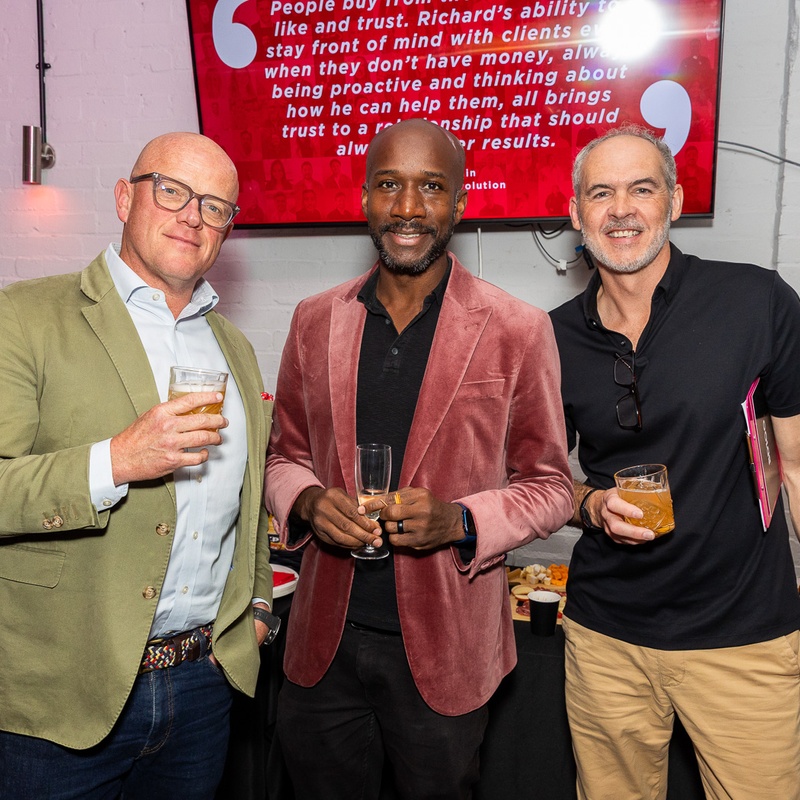How to hire designers for hybrid teams without killing their creative spark

Whilst lots of businesses have been increasing their mandated office days recently, hybrid working has long been the go-to setup for creative teams And when you’re hiring designers, the ones with that rare mix of artistic flair and problem-solving logic, offering a bit of breathing room around how and where they work is one of the best ways to stand out.
Most creatives didn’t get into this line of work to sit in back-to-back meetings or be stuck in the same desk chair from 9 to 5, five days a week. They want to dip into inspiration when it strikes, sketch ideas over coffee, and have the freedom to create somewhere that doesn’t feel like a spreadsheet. That’s where hybrid working shines.
If you’re trying to build or grow a design team and you’ve got that half-in, half-out setup, you’re already giving yourself a head start. But the way you hire has to match the flexibility you’re offering. At DNA Recruit, we understand the unique needs of creative professionals and specialise in connecting businesses with top design talent through our Creative and Design recruitment services. Here’s how to do it without flattening their creativity.
1. Hybrid working suits creative brains
The moment you take that rigid structure off the table, your talent pool gets a whole lot bigger. Designers from different locations can become realistic hires. And for them, working from a place they feel good in isn’t a nice to have, it can be the difference between brilliant ideas and burnout.
Some might prefer an early start, others might hit their peak after lunch, headphones on, idea boards open, and Photoshop humming in the background. Give them the freedom to choose when and where they work best, and you’ll get better work from it.
But flexibility doesn’t mean free-for-all. Hybrid needs a bit of structure to actually work, especially when you’re trying to bring people into the fold from a distance. That structure starts with how you hire.
2. Rethink your interview process
Interviewing a designer isn’t the same as hiring for ops or finance. It’s not about ticking boxes or seeing how well they handle generic questions like “tell us about a time you worked in a team.” You’re hiring someone to bring fresh ideas to the table, so the process needs to show not just tell.
Give them a task. Nothing overly laborious, but something that gives them a chance to stretch their creative muscles. Maybe it’s a social post mockup, or a layout idea for a landing page. Whatever it is, make sure it connects to the kind of projects they’d be doing for real.
And then, talk through it. Not just what they made, but how they made it. What inspired them? What direction did they throw out halfway through? Where did they take a risk? That’s where you’ll see their thought process and often that’s more valuable than their finished product.
3. Make yourself worth working for
Top designers can spot a clunky setup from a mile away. So if you want them to choose you, you need to be offering more than just a flexible contract and a Slack channel. You need to make it clear that this is a place where they can actually create.
That means:
· Tools that aren’t outdated or glitchy. If your team is still wrangling with software that crashes mid-project, that’s a hard no from most designers. Make sure they’ve got access to the tools they love and the gear they need to do the job properly.
· Clear but open brand guidelines. Yes, designers need boundaries. But those guidelines should feel more like a helpful nudge than a locked box. Show them where they can push, stretch, play around and where consistency really matters.
· Projects that feel exciting. If every brief reads like “make this slightly less boring,” you’re not going to attract anyone with real creative drive. Share what’s coming up, the kind of work they’d be diving into, and what space there is for their own ideas to shine.
· A culture of collaboration, not just communication. Remote working doesn’t have to mean working alone. Set up proper creative check-ins, encourage idea sharing, and give space for people to pitch new concepts. The best ideas often come out of random, scrappy sketches shared in passing.
4. Get real about AI
Designers know AI is in the mix now. It’s part of their everyday whether they like it or not. But if you don’t spell out how you expect it to be used in your business, it creates tension. Am I competing with it? Am I supposed to be faster now? Are you expecting me to just feed prompts into Midjourney and call it a day?
You need a clear, honest plan around it. Show your team how AI supports the work, rather than steamrolling over it. Maybe it’s helping with moodboards, drafting content ideas quicker, or automating repetitive layout tweaks. But also, make it clear what can’t be replaced. The nuance, the human instinct, the instinct you just can’t replicate with a prompt.
Be upfront about output expectations too. Yes, AI might speed up some tasks. But creativity doesn’t work like a conveyor belt. Let your designers find smart ways to use it, while still giving them the time and space to create work that feels real.
How to hire designers in hybrid teams
Hiring for hybrid design roles isn’t about finding someone who can sit quietly in a corner and follow instructions. It’s about finding people who can bring fresh energy to your team, even if they’re logging in from a different postcode. If you give them the freedom to work how they work best, the right tools to do it well, and a place where their ideas actually matter, you’ll attract creatives that create work worth shouting about. For you and your clients.
SHARE







